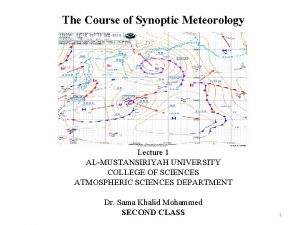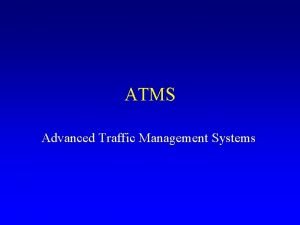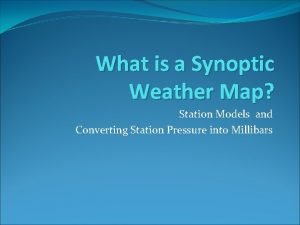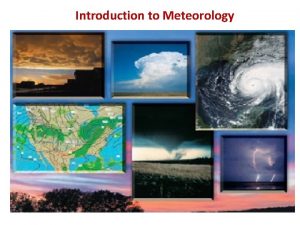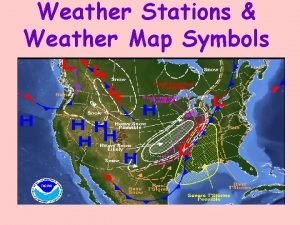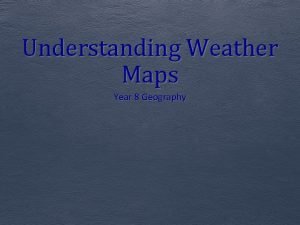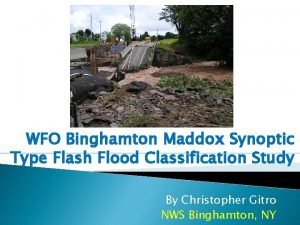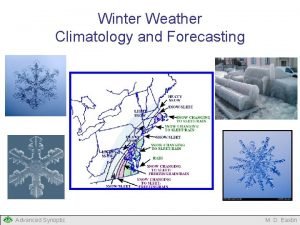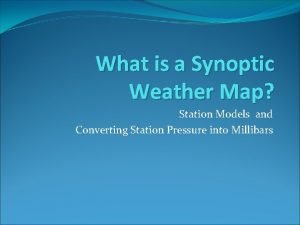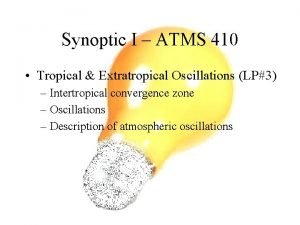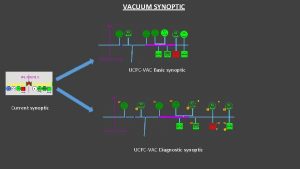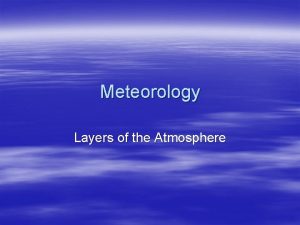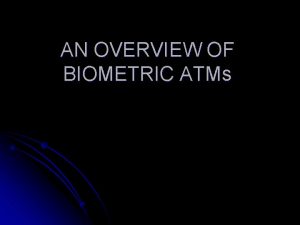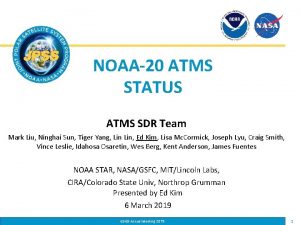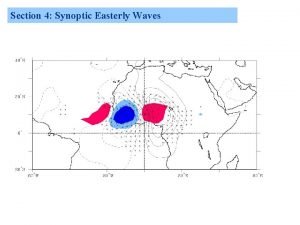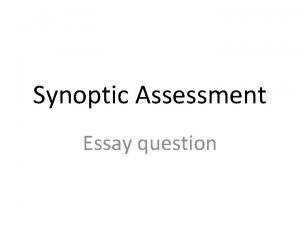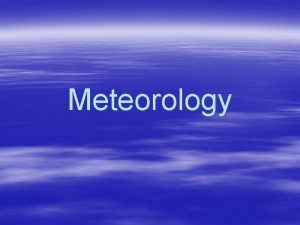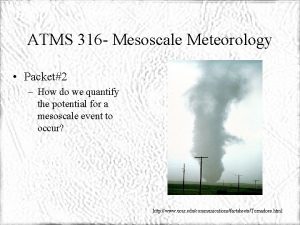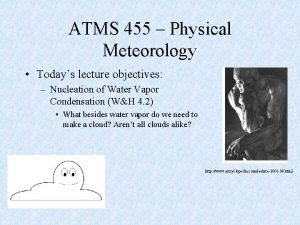Scalar Analysis in Synoptic Meteorology ATMS 370 Definition



















- Slides: 19

Scalar Analysis in Synoptic Meteorology ATMS 370

Definition • Scalar Analysis is the analysis of a quantity that has magnitude only • Examples: temperature and pressure. • Consists of drawing isopleths: line of constant values. Topographic maps are good examples.

Examples of Meteorological Isopleths • isobar: pressure • isohyet: precipitation • isopycnic: density • isotach: wind speed • isogon: wind direction • isotherm: temperature • isentrope: potential temperature • isallobar: pressure change isallobars

• Being with plotted map with some parameter at selected observation points. • Decide on contours and values. • Then interpolate between points as one draws continuous lines. 1200 800 1000 800 1400 1200 900

Linear interpolation is acceptable as first approximation, but non-linear variations should be taken into account if possible linear 400 500 Non-linear 700 1300


Both human and machine-based interpolation is possible: humans often do a very good job at it, even capturing non-linear effects • Human’s can gain understanding through manual analysis • That is one reason you will do so in class. • There is an intimate connection between our hands and brains • And a great deal of learning in making the subtle decisions about where to put isopleths.

500 h. Pa: The first level you will analyze • Will analyze 500 h. Pa geopotential heights. Noting ridges, troughs, closed lows, closed highs. • Important level: about half the mass of atmosphere is above and below. ~5500 meters, 18, 000 ft. • 60 -m contour interval is standard • Centered around 5400 m. e. g. , 5280, 5340, 5400, 5460, 5520 meters • Labeled in decameter (dm)—hundreds of meters (e. g. , 540, 546)

Typical 500 h. Pa wave pattern Weaker gradient Tighter gradient


Important tip: You are doing a synoptic(larger scale) analysis. Keep lines smooth!

Where data is sparse, choose simple, regular spacing

NOT THIS

500 h. Pa analysis tips • Observations are not perfectly accurate, typically 500 h. Pa heights have errors of ~10 -15 meters. Thus, you have some flexibility. • Flow is very close to geostrophic at 500 h. Pa so: • Winds should be ~parallel to height lines • Wind speeds should be scaling with height gradient (winds stronger with greater gradients) • Thus, winds give you a lot of information about height lines


Sometimes there are discrepancies with geostrophy at 500 h. Pa • In tight troughs or ridges where the gradient wind balance is better than geostrophic • supergeostrophic winds in ridges • subgeostrphic winds in troughs. • More later in class! • Where there are observation errors • Due to subsynoptic features we are not analyzing (e. g. , thunderstorms)

Upper-Level Station Model (radiosonde) At 500 h. Pa, height (hhh) is In decameters. (553 is 5530 meter) Circle is shaded if dew point depression is five or less

* Indicates satellite based obs

Rectangle indicates aircraft-based observations
 Synoptic meteorology definition
Synoptic meteorology definition Atms traffic control
Atms traffic control Heritage
Heritage Station model example
Station model example Sunoptic gospels
Sunoptic gospels Meteorology definition
Meteorology definition Wjec criminology unit 4 revision
Wjec criminology unit 4 revision Synoptic gospels
Synoptic gospels History and evolution of repertory ppt
History and evolution of repertory ppt Weather map symbol
Weather map symbol Geography synoptic weather map
Geography synoptic weather map Primary doctrines in police planning
Primary doctrines in police planning Maddox synoptic pattern
Maddox synoptic pattern Synoptic
Synoptic Synoptic weather station model
Synoptic weather station model Synoptic gospels
Synoptic gospels Ship synoptic code
Ship synoptic code List the synoptic gospels
List the synoptic gospels Synoptic scale motion
Synoptic scale motion Synoptic
Synoptic
